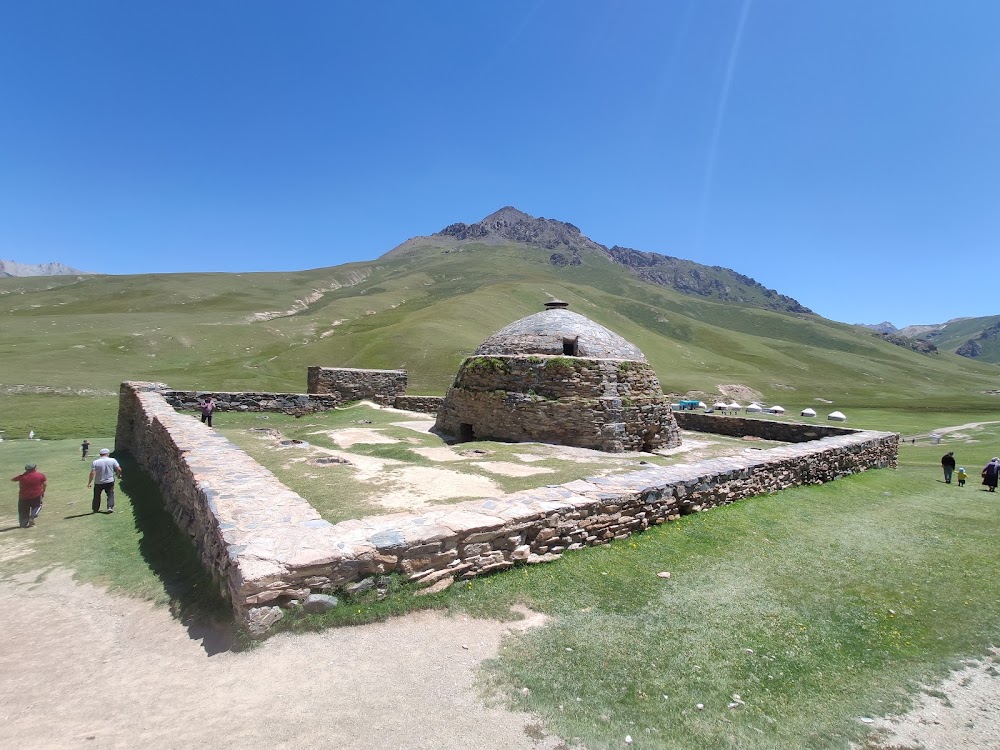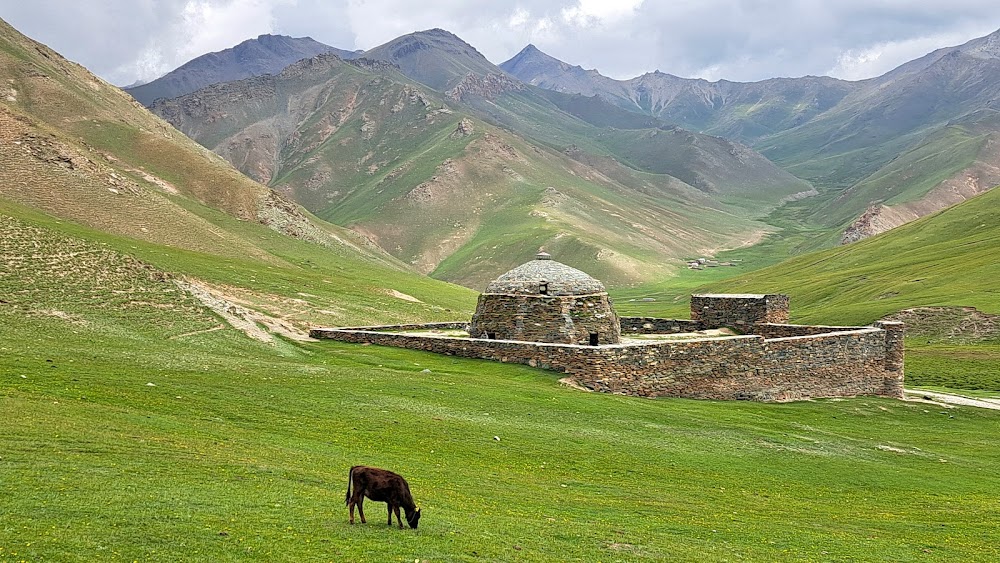Tash Rabat (Таш Рабат)
Related Places
Overview
**Tash Rabat: A Window into the Silk Road's Legacy**
Tash Rabat is a remarkable and ancient structure located in the remote Naryn Region of Kyrgyzstan. Nestled in the stunning Kara-Koyun Valley at approximately 3,500 meters above sea level, this architectural gem primarily served as a caravanserai—a roadside inn designed to shelter traveling merchants and their caravans along the historic Silk Road.
The origins of Tash Rabat date back to the 15th century, although some historians suggest that it could be even older, possibly reaching back to the 10th century. While its exact beginnings remain shrouded in mystery, it is widely believed that the site functioned as a Christian monastery before the region's Islamization, and later transformed into a refuge for Silk Road traders.
**An Architectural Marvel**
Constructed entirely from stone, Tash Rabat is an architectural marvel in itself. The structure consists of layered stone bricks assembled meticulously without the use of mortar. Its most striking feature is the large, dome-covered central hall, which spans roughly 25 meters in diameter. From this main hall, a series of small chambers and corridors extend, totaling around 31 rooms, each adorned with vaulted ceilings.
The walls of Tash Rabat are impressively thick, providing exceptional insulation against the harsh weather conditions typical of this high-altitude region. This thickness also served to fortify the building, offering protection against potential bandit attacks that were prevalent during the peak of Silk Road activity.
**Ingenious Engineering**
One of the most captivating aspects of Tash Rabat is its sophisticated engineering. Each element of the structure was meticulously designed to optimize airflow, temperature regulation, and lighting. Small windows and strategically placed doors ensure that, even amidst chilling winter winds or summer heat, the interior remains surprisingly stable and comfortable.
Historically, Tash Rabat's location was crucial for itinerants navigating the treacherous Silk Road routes. It provided not only physical shelter but also psychological comfort, standing as one of the few sanctuaries amid the rugged Tian Shan mountains. Travelers could rest, recuperate, and trade goods before continuing their arduous journey.
**Cultural and Spiritual Significance**
Beyond its practical applications, Tash Rabat also holds immense cultural and spiritual significance. Traces of its past as a monastery are evident in some intricate carvings found within its walls. Over the centuries, it became a melting pot of various cultural influences, reflected in its diverse architectural and decorative elements.
Rediscovered in the 19th century by Russian explorers who were intrigued by its historical importance and unique construction, Tash Rabat has since been the focus of numerous archaeological studies and conservation efforts.
**A Timeless Testament**
Today, Tash Rabat stands as a testament to the region's rich history and the enduring human spirit. While much of the surrounding Silk Road infrastructure has crumbled into the annals of history, Tash Rabat remains remarkably well-preserved, attracting visitors from around the globe eager to explore this ancient marvel.
Tourists visiting Tash Rabat can immerse themselves in the breathtaking natural landscape of the Naryn Region, characterized by its rugged mountains and serene valleys. The site is primarily accessible via a long, winding road, enhancing the sense of adventure and discovery for modern explorers.
For those seeking a deeper understanding of Central Asian history and the significance of the Silk Road, Tash Rabat offers a tangible connection to a bygone era. Its enduring presence continues to inspire awe and admiration, standing as a stone sentinel that has withstood the test of time and the shifting tides of history.






